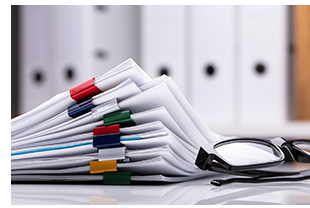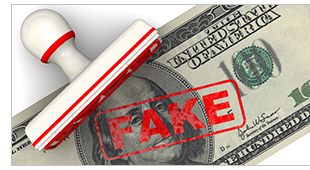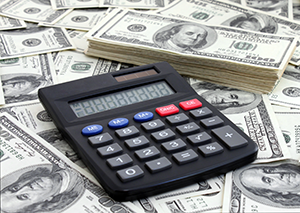Newsletter
Please feel free to read our client newsletter. It is provided to keep you up to date on the latest tax and accounting news.
Client Update Newsletter: January 2024
Contents
- Tips for a Smooth Tax Season
- Ideas to Help Set Financial Goals
- The Problem with Fakes
- Every Business Needs Cash!
Tips for a Smooth Tax Season

With tax season officially underway, here are tips to make filing your return as stress-free as possible:
- Gather your tax information for filing. Items you’ll need include W-2s, 1099s, K-1s and other forms you receive from your business, employers, brokers, banks, and others. If you find any errors, contact the issuer immediately to request a corrected copy.
- Organize your records. Once you’ve started gathering your information, find a place to put all the documents as you receive them, or consider scanning documents to store on your computer. You can also take pictures of the documents with your phone as backup. Missing information is one of the biggest reasons filing a tax return is delayed.
- Create an April 15th reminder. This is the deadline for filing your 2023 individual income tax return, completing gift tax returns, making contributions to a Roth or traditional IRA for 2023, and for paying the first installment of 2024 individual estimated taxes. So create a reminder that works for you.
- Know the deadlines for business returns. If you are a member in a partnership or a shareholder in an S corporation, the deadline for filing these business returns is March 15th. Calendar-year C corporation tax returns are due by April 15th.
- Clean up your auto log. Create and review the necessary logs to support your qualified business miles, moving miles, medical miles and charitable miles driven by you. Gather the logs and make a quick review to ensure they are up to date and totaled.
- Review your child’s income. Your child may be required to file a 2023 income tax return. A 2023 return is generally required if your child has earned more than $13,850, or has investment income such as dividends, interest, or capital gains that total more than $1,250.
- Contribute to your IRA and HSA. You can still make 2023 IRA and HSA contributions through either April 15th or when you file your tax return, whichever date is earlier. The maximum IRA contribution for 2023 is $6,500 ($7,500 if age 50 or older). The maximum HSA contribution is $3,850 for single taxpayers and $7,750 for families.
- Calculate your estimated tax if you need to extend. If you file an extension, you’ll want to do a quick calculation to estimate your 2023 tax liability. If you owe Uncle Sam any money, you’ll need to write a check by April 15th even if you do extend.
Ideas to Help Set Financial Goals

With the new year underway, it may be time to come up with a list of goals and that could make 2024 the most financially rewarding year for your entire family. Your motivation can be nearly anything, from saving for retirement or paying for college. Consider these resolutions that can also provide a financial boost:
- Declutter for cash. Go through every room of the house as a family and collect items that nobody uses or needs anymore. Sell these items through sales platforms, then use the cash to pay down debt or add to your emergency fund.
- Work together to reduce food waste. With inflation running high over the last few years and grocery prices on the rise, everyone in the family can to do their part to reduce food spending. This means creating meal plans and shopping for groceries based on those plans, but it also means eating leftovers and cooking more at home instead of dining out.
- Set up automatic savings. Setting up automatic savings is another great way to make progress toward financial goals. You can set up your bank account to automatically transfer money to a dedicated savings account on a certain day each month, or on each payday.
- Save for something fun. Set a family savings goal for something to work toward, whether that’s saving for a family vacation or the building cash to purchase a backyard playground. Having a goal can help family members part with items they don’t need but can sell, or to cut their spending to help reach a common goal.
- Develop investing basics. Set up online access for your own retirement accounts or taxable investment accounts so you can show your family the power of compound interest firsthand. You can even consider setting up investments for your kids. If they have earned income, for example, they can start investing with a Roth IRA.
Financial goals can be a family affair if everyone in your crew understands what you’re working toward and what’s at stake. By keeping communication open and getting your entire family on the same page, you can all work together toward the lifestyle you want.
The Problem with Fakes
Protect yourself from modern-day counterfeiters
Finding brand name products at a great price can leave you feeling like you won the lottery, but there are hidden dangers that come into play if the goods aren’t what they seem.
Here are some commonly counterfeited items and what you need to know to protect yourself.
Commonly Counterfeited Items

- Currency. The U.S. Treasury estimates that there are nearly $9 million of counterfeit bills in circulation. While creating an excellent counterfeit $100 bill would seem difficult, criminals can trick you if you aren’t paying attention.
- Shoes & Clothing. Manufacturing a low-quality knock-off and slapping a brand name label on a shirt or a pair of shoes is a tale as old as time. It’s much harder to spot a fake through online pictures and videos than seeing and touching it in person.
- Collectibles. Watches, coins, jewelry and artwork are often faked and sold for far less than anyone should believe.
- Electronics. As technology continues to evolve, so does the ease of assembling electronics. Using cheap components and labor, companies can slap together their version of the real thing. This process cuts corners and sometimes skirts safety procedures that can lead to knock-off electronic products that can pose a hazard to your health.
- Replacement parts. Fake parts are common within the electronics and auto repair industries and are especially difficult to spot. Unfortunately, parts not produced by the original manufacturer often fail to meet their operational specifications.
How to Protect Yourself
Knowing that counterfeit items are out there is the first step to avoiding them altogether. These additional tips can help you avoid fakes and the damage they cause:
- Know the real thing. The best way to spot a fake is to know the real thing inside and out. In the case of currency, the new $100 bills have plenty of watermarks, different textures and a security ribbon that make it difficult to fake. For products, do your research to know the characteristics of the legitimate item before you buy. Clues often come from irregularities in logos, colors and packaging.
- Buy from authorized retailers. Shopping around for the lowest price is a wise practice. Automatically going with the cheapest option is not. If your purchase is important, stick to an authorized retailer or reputable vendor.
- Research, research, research. The more you know the product, the less likely you will be tricked. Look at products from local stores and read through reviews of online vendors. Conduct research on scams and common tricks used by counterfeiters. Be wary of reviews from the website you are thinking about making the purchase from. Instead, conduct a web search of both the product and the vendor to see what people have to say.
- Trust your gut. Remember that something that seems too good to be true probably is. If you believe an item is probably counterfeit based on the price of the item or the person/website selling it, you’re probably right.
Every Business Needs Cash!
5 keys to better cash management
Focusing on sales and profits can create a surprise for your business when there is not enough cash to pay the bills. Here are five practices to help improve your cash management.

- Create a cash flow statement and analyze it monthly.The primary objective of a cash flow statement is to help you budget for future periods and identify potential financial problems before they get out of hand. This doesn’t have to be a complicated procedure. Simply prepare a schedule that shows the cash balance at the beginning of the month and add cash you receive (from things like cash sales, collections on receivables, and asset dispositions). Then subtract cash you spend to calculate the ending cash balance. If your cash balance is decreasing month to month, you have negative cash flow and you may need to make adjustments to your operations. If it’s climbing, your cash flow is positive.
Tip: Once you have a cash flow statement that works for you, try to automate the report in your accounting system.
- Create a history of your cash flow. Build a cash flow history by using historical financial records over the course of the past couple of years. This will help you understand which months need more attention.
- Forecast your cash flow needs. Use your historic cash flow and project the next 12 to 24 months. This process will help identify how much excess cash is required in the good months to cover payroll costs and other expenses during the low-cash months. To smooth out cash flow, you might consider establishing a line of credit that can be paid back as cash becomes available.
- Implement ideas to improve cash flow. Now that you know your cash needs, consider ideas to help improve your cash position. Some ideas include:
- Reduce the lag time between shipping and invoicing.
- Re-examine credit and collection policies.
- Consider offering discounts for early payment.
- Charge interest on delinquent balances.
- Convert excess and unsold inventory back into cash.
- Manage your growth. Take care when expanding into new markets, developing new product lines, hiring employees, or ramping up your marketing budget. All require cash. Don’t travel too far down that road before generating accurate cash forecasts. And always ask for help when needed.
Understanding your cash flow needs is one of the key success factors in all businesses. If your business is in need of tighter cash management practices, now is the perfect time to get your cash flow plan in order.
